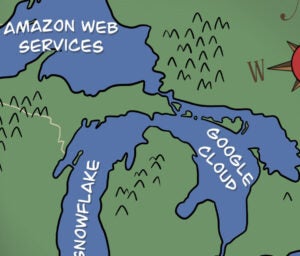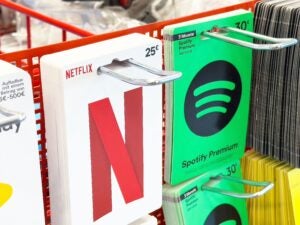“Data-Driven Thinking” is written by members of the media community and contains fresh ideas on the digital revolution in media.
Today’s column is written by Fayez Mohamood, CEO at Bluecore.
When ecommerce-first or pure-play brands such as Warby Parker, Glossier or Bonobos move to physical retail locations, they’re often referred to as innovators.
Alternatively, when offline brands – after years or decades of reaching customers in physical stores, either directly or through retailers – expand their ecommerce efforts, they’re sometimes regarded as late to the game.
In some ways, both are true. While offline shopping is just as new to digitally native direct-to-consumer (DTC) brands as ecommerce is to traditional brands, online-first brands have a digital advantage that helps them excel offline. On the other hand, traditional brands lack much of the data-tech infrastructure they need to thrive online, making it more difficult for them to adapt to the digital environment.
There are several key advantages that digitally native brands have as they move into offline retail. These are areas where offline brands must get up to speed as they expand into digital channels.
As You Wish
DTC brands aren’t guessing what customers want when they get started – they already know. It’s virtually impossible for an offline brand to know all of the products that a particular customer has browsed or considered before making a purchase. But this kind of data has become the norm for DTC brands, which have built shopper-level visibility into their underlying infrastructures.
These brands came of age in a consumer-centric environment where they were forced to tailor their offerings and communications to how consumers are reacting to them in any given moment. Since day one, they’ve had direct access to customers and real-time insight into what shoppers want in multiple channels, including social media, email or online messaging. Because of this, they’re used to going from insight to action, from testing to iteration and from failure to optimization – quickly.
In comparison, traditional brands moving to digital are accustomed to relying on aggregated research and feedback. They’re inevitably less equipped to cull and absorb direct shopper feedback, much less integrate it into their everyday operations. This presents a learning curve as they adapt their processes and operations to meet the pace of digital brands.
Creating value through experience
AdExchanger Daily
Get our editors’ roundup delivered to your inbox every weekday.
Daily Roundup
It might seem that traditional brands would have an advantage over DTC brands in soft skills such as customer experience, but that’s another area where digital gives online-first brands an edge in the offline world.
DTC brands ultimately thrive on understanding the types of experiences their shoppers respond to and introducing more of them. And the more sophisticated brands are beginning to do this at the individual level – at scale.
Through insights they gather at the intersection of the shopper and products they engage with, these brands understand how certain behaviors (shopper viewed a red dress) predict future activity (shopper is likely to buy these jeans). And they’re constantly personalizing each shopper’s experiences based on what they learn.
As shoppers notice their preferences reflected throughout different touch points with a brand, they become more willing to share their interests with that brand. This experience-first mindset carries over to physical stores when DTC brands set up offline presences.
For instance, while traditional brands that move into digital often view their digital channels as competing with offline channels, DTC brands expect shoppers to visit their stores to engage with products while simultaneously searching their online catalogs. Offline doesn’t cannibalize these brands’ online sales; instead, it drives them. This allows brands to focus on the lifestyle aspects of their in-store experiences, rather than on the variety and volume of their in-store inventory.
There is no fight between offline and online, because the experience – and the underlying infrastructure – is fluid.
The bottom line
Just as DTC brands have data to help them anticipate what their customers want, they can also use information, such as presale shopper activity, to gain a sophisticated understanding of their cost of acquisition, break-even points for different customer types, and how they should be driving margins across categories. These insights naturally translate directly into physical scenarios.
When traditional brands move to digital, it’s very difficult to translate decades of customer interactions, which often happened through a third-party retailer, into actionable insights they can use online, or in any other channel.
All of this does not mean that DTC brands moving into offline channels are all doing better than traditional brands moving into ecommerce.
Online-first brands have become very good at driving traffic to their online stores and creating online demand, but some haven’t mastered the art of driving foot traffic to brick-and-mortar. Many aren’t seeing the in-store traffic they’d anticipated.
While both traditional and DTC brands are experiencing a learning curve in their own right, all brands are heading in the direction of a digitally fluid model. Core to that model is a single principal: Every shopper interaction widens a brand’s understanding of its customers, and that understanding can be used to create a more cohesive experience across all channels.
Follow Bluecore (@Bluecore) and AdExchanger (@adexchanger) on Twitter.













